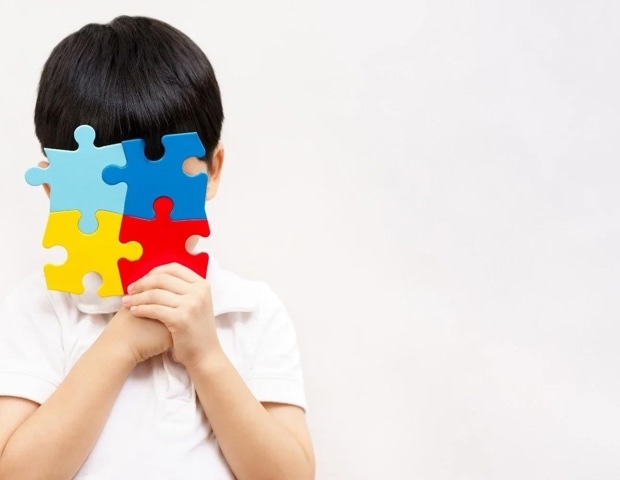
Some autistic teenagers usually undertake behaviors to masks their prognosis in social settings serving to them be perceived – or “move” – as non-autistic. For the primary time, researchers are in a position to observe mind capabilities that differ in those that “move as non-autistic,” which might result in a greater understanding of the cognitive toll of this type of masking, and of how these people could possibly be extra successfully supported.
Utilizing an electroencephalogram (EEG) to measure brainwaves, researchers from Drexel College’s A.J. Drexel Autism Institute discovered that teenagers who move as non-autistic in class settings confirmed quicker automated responses to faces and lowered emotional reactivity to delicate emotional facial expressions. This discovering might play a key position in guaranteeing autistic teenagers, who could not really feel comfy revealing their prognosis, can nonetheless obtain the help they should thrive.
This implies that their brains could also be wired to rapidly acknowledge social cues whereas dampening emotional responses, both as a preparatory or coping mechanism. These findings supply the primary direct proof of how mind exercise may differ in those that move as non-autistic, shedding gentle on the hidden psychological effort behind social masking in autism. The findings might reshape how we perceive the psychological toll of masking.”
Matthew Lerner, PhD, affiliate professor, chief of the Life Course Outcomes Analysis Program, and director of the Social Connections and Remedy Lab within the Autism Institute and lead writer of the examine
The examine, just lately printed in Scientific Reviews, revealed that 44% of community-recruited autistic teenagers handed as non-autistic within the classroom – which means their lecturers wouldn’t have observed or recognized them as autistic. Those that have been within the “handed as non-autistic” group confirmed quicker preliminary mind response when faces and confirmed much less emotionally reactive mind response to delicate feelings in faces.
Lerner defined that these findings reveal, for the primary time, a number of the methods wherein autistic teenagers who move as non-autistic course of social data in distinctive methods, which differ each from non-autistic teenagers and autistic teenagers who don’t move as non-autistic. These findings additionally counsel that there could also be extra autistic teenagers who move as non-autistic than beforehand thought, although larger-scale analysis is required to help this.
These datasets have been collected as half of a bigger Nationwide Institute of Psychological Well being-funded examine inspecting components impacting social outcomes in autistic teenagers. Importantly, this examine targeted on recruiting a broad inhabitants from the group, together with those that didn’t essentially have an autism prognosis prematurely. Lerner added that this allowed for inclusion of teenagers who meet standards for autism by formal diagnostic processes however could not in any other case have an current prognosis or helps in colleges.
The analysis crew defined that the “passing as non-autistic” group was recognized by trying on the distinction between autism options as displayed in a gold-standard diagnostic setting and people displayed in school rooms (in accordance with lecturers) and at dwelling (in accordance with dad and mom).
“This allowed for extra clearly defining what we imply by ‘passing,’ as a result of these youth who did so each unambiguously met standards for autism by gold-standard measures and didn’t present any important hints of autism within the classroom in accordance with their lecturers,” stated Lerner.
The EEG measurements have been taken throughout a standardized process the place individuals have been proven a set of faces and requested to charge their emotion.
Their event-related potential responses – the small “blips” within the brainwave that point out a mind’s response to stimuli (the faces) – offered details about how an individual differentiates a face from a non-face object, and the way an individual regulates their emotional response to a stimulus.
“We hope this may spur higher inquiry into figuring out autistic youth who’re ‘passing as non-autistic,’ figuring out what cognitive efforts are concerned on this, and creating improved methods to help the lives of those that are doing so,” stated Lerner.
Supply:
Journal reference:
Houck, A. P., et al. (2025). Computerized and affective processing of faces as mechanisms of passing as non-autistic in adolescence. Scientific Reviews. doi.org/10.1038/s41598-025-04801-y.